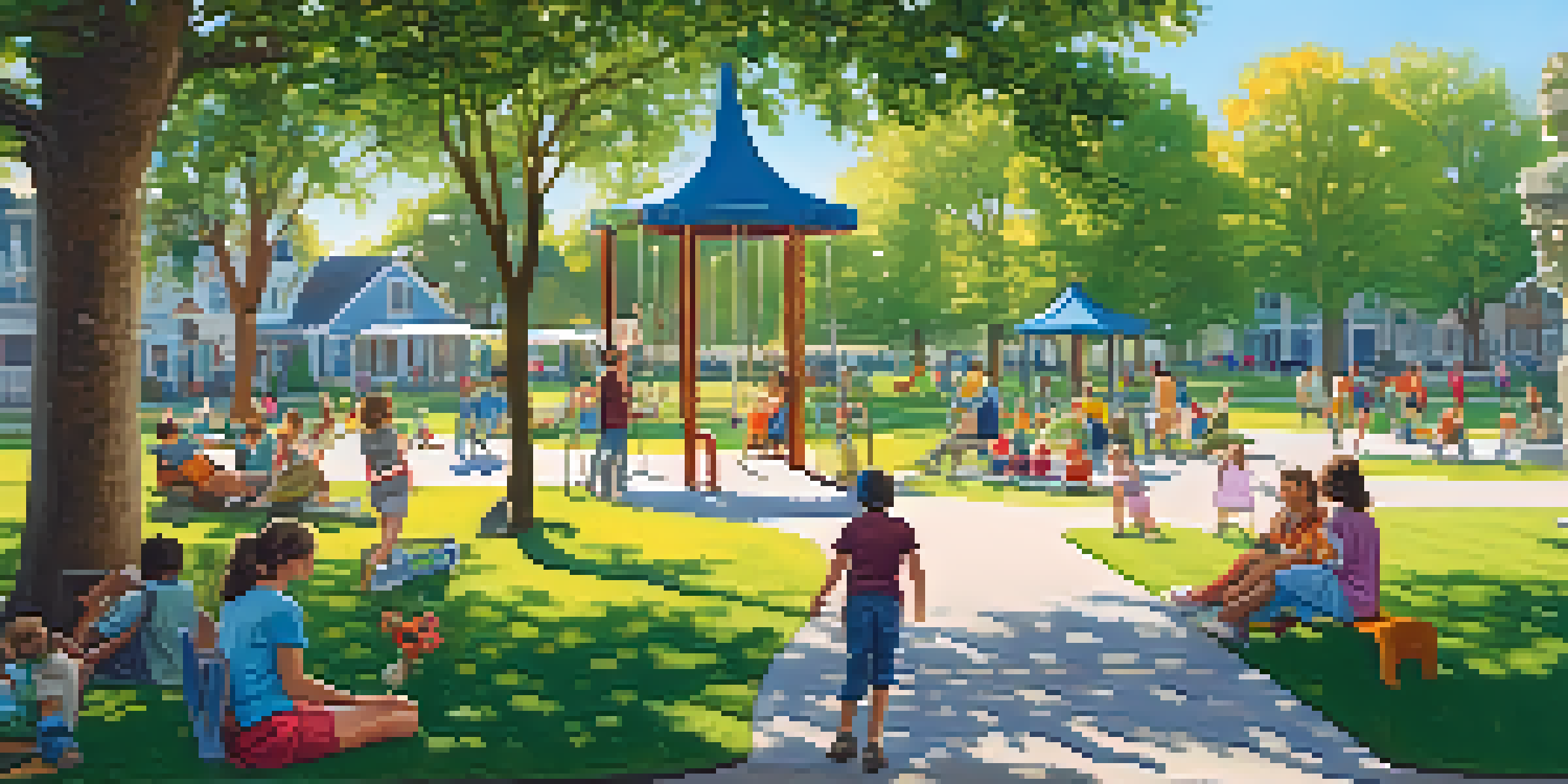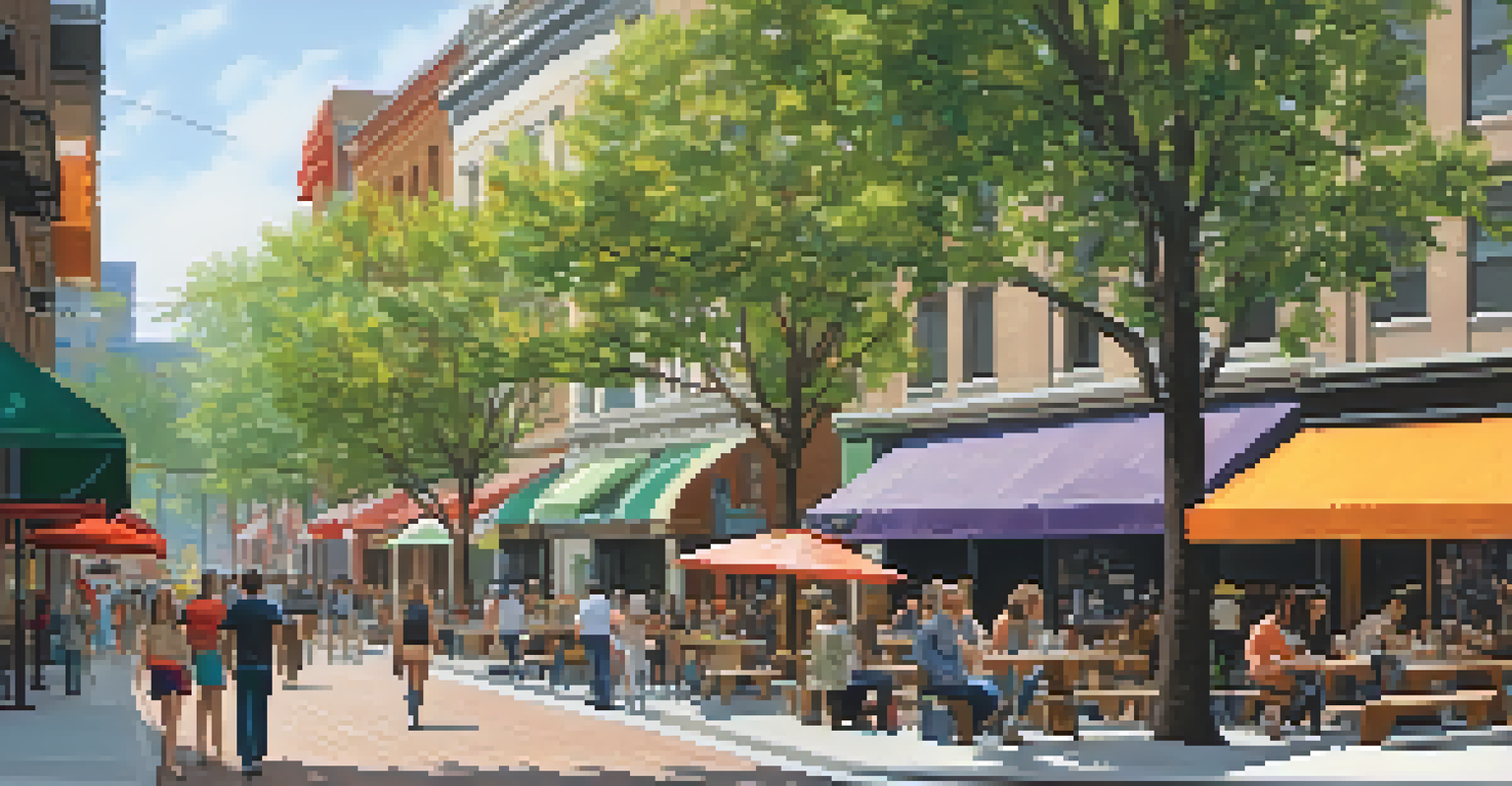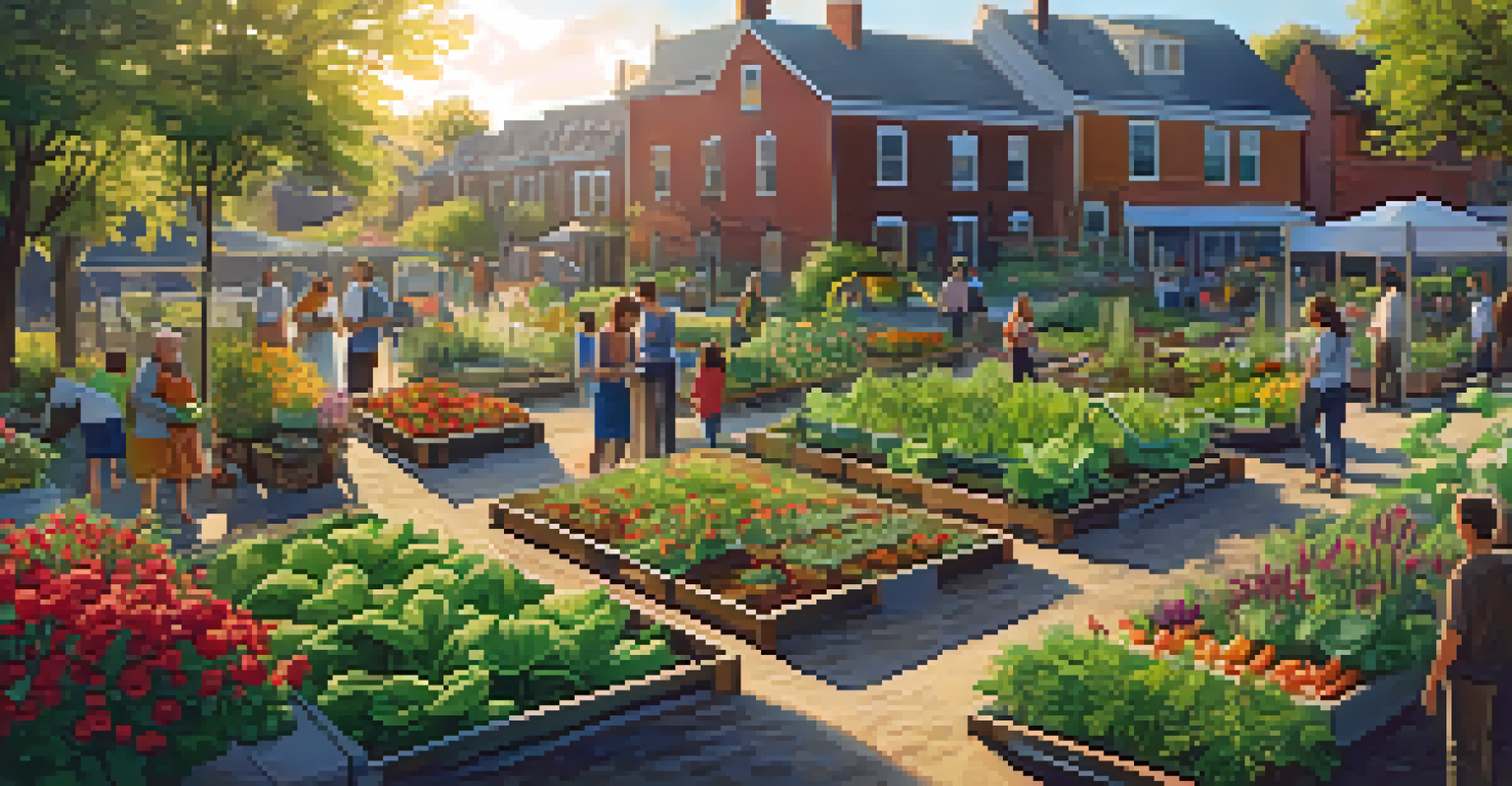How Community Development Projects Impact Property Values

Understanding Community Development Projects
Community development projects are initiatives aimed at improving the quality of life in a neighborhood. These projects can range from building parks and schools to enhancing public transportation and housing. Essentially, they focus on making communities more livable and attractive for current and prospective residents.
The greatness of a community is most accurately measured by the compassionate actions of its members.
The goal is to foster a sense of community, increase safety, and provide better amenities. When people feel connected to their community, they are more likely to invest in their homes and local businesses. This investment can create a positive feedback loop that benefits everyone involved.
Moreover, these projects often involve community input, ensuring that the changes reflect the needs and desires of residents. By aligning developments with community expectations, these initiatives can build trust and promote long-term engagement among residents.
The Link Between Community Projects and Property Values
Community development projects directly influence property values by making areas more desirable. When amenities like parks, grocery stores, and schools are added, they enhance the attractiveness of a neighborhood. Buyers are often willing to pay more for homes in areas that offer these conveniences.

Additionally, well-planned developments can lead to lower crime rates and improved public services, which are key factors in determining property values. For example, neighborhoods that invest in safety measures often see a decrease in crime, making them more appealing to families and potential buyers.
As property values rise, homeowners can benefit from increased equity, allowing them to invest further in their homes or the community. This creates a sense of pride and motivates residents to maintain and improve their properties, further enhancing the neighborhood's charm.
Case Studies of Successful Community Development
Several cities have seen significant property value increases due to effective community development projects. For instance, in areas where community gardens were introduced, property values rose as residents embraced a greener lifestyle. These gardens not only beautified the area but also fostered community spirit and engagement.
Communities are built on the foundation of trust and commitment to each other’s well-being.
Another example is the revitalization of downtown areas through pedestrian-friendly initiatives. Cities that prioritized walkability saw an influx of new businesses and residents, resulting in a notable uptick in property values. It’s clear that when a community invests in itself, the financial benefits can be substantial.
These case studies highlight the importance of strategic planning and community involvement in development projects. The success stories serve as a roadmap for other neighborhoods looking to boost their property values through similar initiatives.
Economic Benefits of Increased Property Values
Higher property values not only benefit homeowners but also have broader economic implications. When property values increase, local governments can collect more in property taxes. This additional revenue can be reinvested into the community for further development or essential services, creating a cycle of growth.
Moreover, increased property values can attract new businesses to the area, as entrepreneurs are drawn to neighborhoods that show promise and growth. This influx can lead to job creation and a more vibrant local economy, benefiting everyone in the community.
Ultimately, the economic benefits of rising property values can help sustain community development projects. As neighborhoods thrive, they can continue to invest in themselves, ensuring long-term prosperity and stability.
Challenges in Community Development Projects
While community development projects can have positive impacts, they also face challenges that can affect property values. Gentrification, for instance, can lead to rising costs that push out long-term residents. It’s crucial for communities to find a balance between improvement and inclusivity.
Moreover, poorly planned projects may fail to meet community needs, resulting in wasted resources and community frustration. If residents feel alienated from the development process, they may not support initiatives, which can hinder property value growth.
Addressing these challenges requires open communication and collaboration among community leaders, residents, and developers. By ensuring that all voices are heard, communities can create projects that truly reflect their values and needs, leading to a more successful outcome.
The Role of Local Government in Development
Local governments play a crucial role in the success of community development projects. They often provide funding, resources, and support to help bring initiatives to fruition. Additionally, local governments can facilitate collaboration between various stakeholders, ensuring that projects align with community goals.
Effective zoning laws and regulations can also promote or hinder development. By creating policies that encourage growth while protecting current residents, local governments can help maintain a balance that supports property value increase without displacement.
Ultimately, a proactive local government can be a driving force for positive change. By prioritizing community development, they can help create vibrant neighborhoods that enhance property values for everyone involved.
Future Trends in Community Development and Property Values
As urban areas continue to evolve, future trends in community development will likely focus on sustainability and technology. Innovative projects that emphasize green spaces and eco-friendly practices are becoming more popular. These developments not only attract environmentally-conscious buyers but can also lead to long-term savings on utilities and maintenance.
Technology integration in community development, such as smart city initiatives, can also enhance property values. By improving infrastructure and creating more efficient services, these technologies can make neighborhoods more livable and appealing.

Looking ahead, communities that embrace these trends will likely see a positive impact on property values. By staying ahead of the curve and adapting to changing needs, neighborhoods can continue to thrive and grow sustainably.